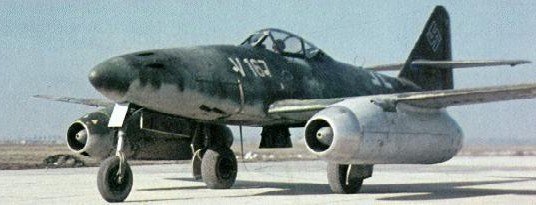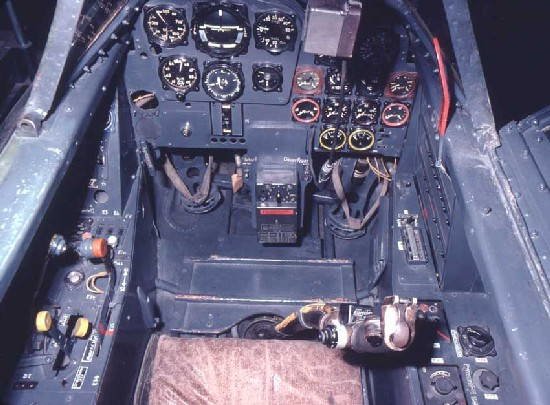The Me 262 was literally years ahead of fighters of other nations. That’s what the Allied engineers concluded after the war, when Me 264 units captured in Germany were brought back in their home countries. Studying the airframe and engines of this one-of-a-kind aircraft, the American, Russian and British experts developed more advanced jet engines and airframes, so that pilots could finally break the sound barrier over the ensuing years.
Hitler wanted this military aircraft to be a bomber, so it first went to combat as such. With limited load capacity, the Messerschmitt 262 had little impact on the advancing Allied divisions. Had it been used properly from the start (i.e. as a fighter), it might well have swept Allied bombers from the skies. The Me 262 really gave the German pilots and edge over the Allied since there was no equal airplane for them to fly.
From March 1944 to April 1945 (fall of the Third Reich), 1,433 Me 262 were produced.
| Type: | Fighter and bomber |
| Engine: | 2 Junkers Jumo 004B jet engines |
| Max speed: | 870 Km/h (540 mph) |
| Rate of climb: | 1 200 m/min (3940 ft./min.) |
| Ceiling: | 11 450 m (37,500 ft.) |
| Range: | 1 050 Km (650 mi.) at 9 000 m (30,000 ft.) |
| Weight (empty): | 3 800 Kg (8,738 lb.) |
| Weight (loaded): | 6 400 Kg (14,110 lb.) |
| Wingspan: | 12,5 m (40 ft. 11 in.) |
| Length: | 10,6 m (34 ft. 9 in.) |
| Height: | 3,83 m (12 ft. 7in.) |
| Armament: | Rheinmetall-Borsig MK 108 cannon mounted in nose; twelve R4M air-to-air rockets; two 226-kg (500-lb.) bombs or one 452-kg (1,000-lb) bomb |

